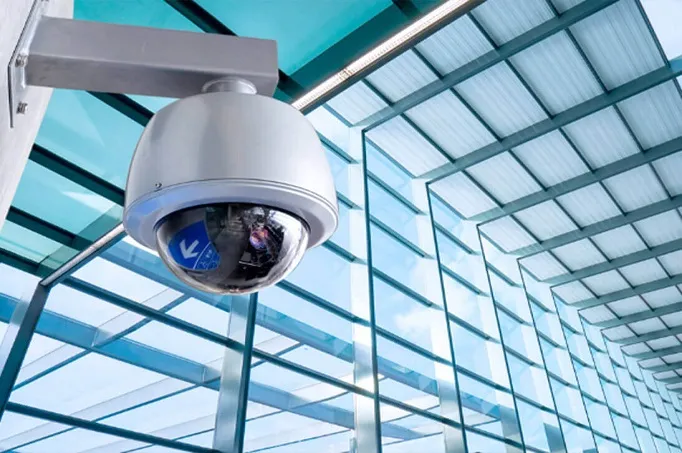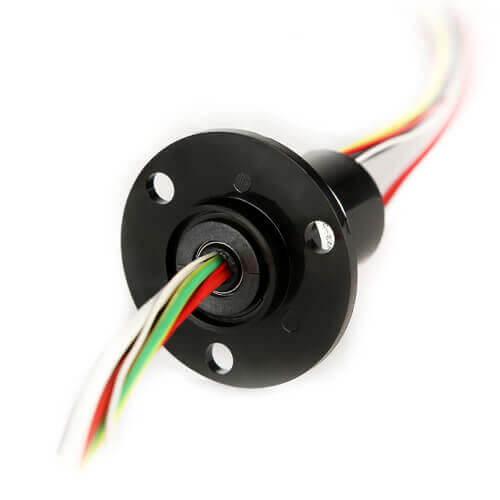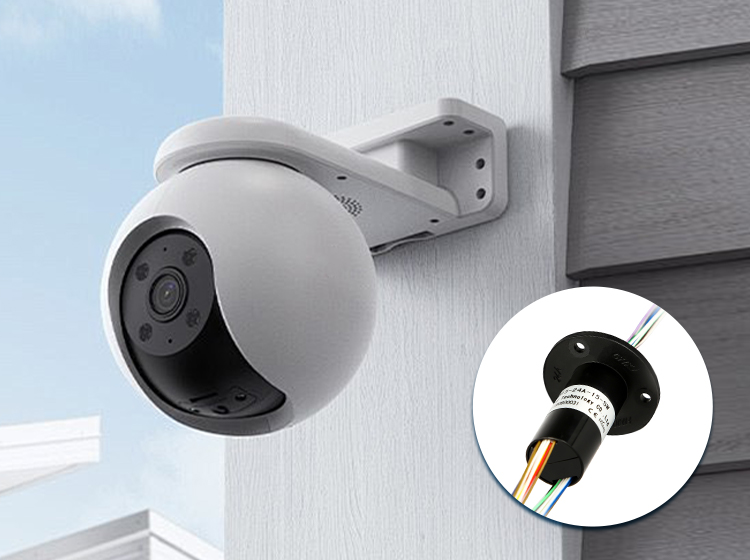In a world that grows increasingly connected, efficient installation monitoring remains crucial across various industries. This article investigates the integral role played by an often-overlooked device – the slip ring – in this critical process, offering a vast exploration into its applications, inherent challenges, innovations, and prospects.
Introduction to Slip Ring Application in Installation Monitoring
In an era marked by rapid technological advancements and connectivity, slip rings have emerged as an essential mechanical component, assuring efficient communication and power delivery between stationary and rotating parts of various machines and installations. These electromechanical devices, characterized by low friction and high durability, provide continuous electrical connections that ensure data, signal, and power transfer even in the presence of rotation, proving their vital importance in numerous applications.
One such core application is the realm of installation monitoring. Ranging from industrial automation and infrastructure projects to security and energy management systems, installation monitoring necessitates effective communication between myriad components to ensure precise data transfer, reliable operations, and real-time adjustments. Slip rings facilitate this seamless interchange of information, making them a keystone element in modern installation monitoring. In this context, our examination delves into the indispensable role of slip rings and elaborates on their intricacies within the diverse world of installation monitoring systems.

Overview of Slip Rings
At a fundamental level, slip rings essentially act as the connective tissue that enables an unhindered flow of power or signals from a stationary source to a rotating structure. This uninterrupted connection is crucial in situations of continuous rotation, as it facilitates the free movement of parts while preserving a constant communication line, a feature central to the operation of various installation monitoring systems.
The core mechanics of a slip ring involve two main components – rotating and stationary. The rotating part, also called the rotor, is connected to the moving section of the device, while the stationary component, or the stator, is linked to the static section. These two parts are designed to remain in constant contact throughout, transmitting data or power through their conductive surfaces. In installation monitoring systems, this constant contact capability of slip rings maintains an unwavering real-time data feed, enabling appropriate corrections and functional adaptations as necessary.
Diving deeper into the catalog of slip rings, we find various types each tailored for specific applications, including capsule slip rings, through-bore slip rings, pancake slip rings, mercury slip rings, and ethernet slip rings, among others. Capsule slip rings, for instance, are compact and ideal for transmitting low currents, often used in smaller installation monitoring systems such as security cameras or medical imaging devices. Through-bore slip rings provide a central hole for mounting and are common in wind turbines and radar systems. Pancake slip rings are disk-shaped and allow for variables like high speed, while mercury slip rings use liquid metal for minimal noise and are employed in high-speed, high-frequency applications. Ethernet slip rings, on the other hand, cater to the requirements of industrial IoT systems, ensuring high-speed, reliable data communication for installation monitoring. By understanding these variants and their tailored use cases, it becomes apparent how slip rings serve as a linchpin in the successful operation of diverse monitoring installations.

The Role of Slip Rings in Installation Monitoring
In installation monitoring systems, the role of slip rings extends beyond mere functionality—they become an essential cog in the operational efficiency and performance optimization machine. The seamless and uninterrupted data transfer facilitated by slip rings enables a steady stream of information flow, critical for real-time oversight, and predictive corrections. This continuous exchange, marked by minimal signal degradation or noise, offers manufacturers, engineers, and operators valuable insights into the performance and health of their installations, thus empowering comprehensive monitoring and management.
Given their unique ability to provide this unmitigated connection, slip rings manifest as an integral component of various monitoring systems spanning numerous applications. These range from mechanical systems (such as wind turbines or radar installations) requiring feedback for predictive maintenance to security systems (like CCTV cameras) needing around-the-clock operation, and even to sensitive medical imaging devices utilizing multiple rotating elements. In all these examples—and many more—slip rings ensure the researchers, scientists, and technicians maintain an essential finger on the pulse of the entire process, making them indispensable for effective installation monitoring.
The contribution of slip rings goes further than just functionality—they also significantly enhance operational efficiency by lowering system downtime. With extraordinary mechanical durability and wear resistance, slip rings reliably operate for extended periods with low maintenance needs. Combined with their role in preventing system disruptions caused by rotated wire connections, slip rings assist in maintaining consistent operation and minimizing any unforeseen halts. Consequently, this reduction in downtime leads to an increase in productivity and cost-efficiency—an additional testament to the pivotal role of slip rings within installation monitoring systems.

Key Components of Installation Monitoring
A well-distributed and synergistic network of critical components underpins the foundation of an installation monitoring system, each element playing a vital role in maintaining operational efficiency. These fundamental components can be broadly bucketed into three categories: sensors and data acquisition equipment, real-time data transfer and communication systems, and continuous power supply integration.
Sensors and data acquisition equipment act as essential input devices, gathering information from the monitored environment and transforming these physical parameters into electrical signals for analysis. Ranging from capacitive, inductive, and magnetic sensors to those measuring temperature, humidity, or pressure, these data acquisition instruments must be carefully chosen to provide accurate, reliable, and sensitive measurements. This careful calibration ensures that the sensor and associated equipment, often including amplifiers and converters, yield a precise digital representation of the monitored environment, forming the cornerstone of efficient system performance.
Real-time data transfer and communication systems serve as the nerve center of an installation monitoring system, orchestrating the rapid and secure conveyance of information between components. Both wired and wireless systems feature in this context, with the latter gaining traction due to the advent of the Internet of Things (IoT) advancements in wireless sensor networks, and high-speed communication technologies such as 5G. These communication systems cultivate an unblemished and responsive data flow, reflecting the continuous changes in the monitored environment and spawning informed decision-making.
Power supply integration forms the third pillar supporting an effective installation monitoring system, where a consistent flow of power drives the system’s overall performance. To counter challenges associated with powering rotating installations, slip rings rise as ideal components. As these electromechanical devices offer uninterrupted electrical connections between stationary and rotating elements, their presence assuages the potential disruptions and nurtures an unfaltering power flow. The ceaseless operational status secured by slip rings engenders the unyielding functioning of sensors and communication systems, ultimately cementing the overall integrity of the installation monitoring process.
In totality, the delicate interplay and mutual reliance between sensors, communication systems, and power supply integration—for which slip rings prove indispensable—shape the robust foundation of a dynamic and responsive installation monitoring system.
Slip Ring Application in Various Monitoring Environments
In the world of dynamic rotating systems, slip rings lend their efficacious support across a vast spectrum of monitoring environments. These diverse environments include industrial automation and process control, energy and utility infrastructure, construction, and infrastructure projects, as well as security and surveillance installations.
Industrial automation and process control systems routinely incorporate slip rings due to their critical role within automatic machinery. These include robotic arms, assembly lines, or packaging machines. In these environments, slip rings ensure a continuous supply of power and transfer control signals, aiding the smooth execution of industrial tasks while communicating real-time status updates to the central controller. This unceasing information flow bolsters both productivity and safety within industrial environments.
Similarly, slip rings play a paramount role in energy and utility infrastructure. Wind turbines, one prime example of such infrastructure, employ large-scale slip rings to allow power generation regardless of the nacelle’s direction. Through-bore slip rings in these turbines facilitate the continuous transfer of accumulated data from the blades’ myriad sensors to the base station, fostering early detection of mechanical issues and predictive maintenance.
Simultaneously, within construction and infrastructure projects, slip rings prove critical for monitoring rotating machinery such as cranes or tunnel boring machines. They cater to the power requirements of moving parts and enable the transmission of crucial operation information, ensuring better control over equipment and processes, reducing faults, and enhancing overall project execution speed and safety levels.
Finally, in security and surveillance installations like CCTV cameras, slip rings take on the role of a silent, crucial facilitator. They enable cameras’ smooth and seamless pan-and-tilt function, unburdened by the threat of twisted cables or disrupted power. Compact and highly efficient capsule slip rings ensure the constant supply of power and signal transfer, ensuring the end-to-end functioning of these security installations.
In essence, in a variety of monitoring environments, slip rings emerge as indispensable enablers, promoting operational efficiency, system durability, and process safety across varied applications.
Challenges and Solutions: Slip Ring Application in Installation Monitoring
Even as slip rings champion robust and uninterrupted operations within installation monitoring, they grapple with unique challenges. The key obstacles include battling wear and tear, coping with harsh and demanding environments, and seeking to enhance longevity while trimming maintenance costs.
Overcoming Wear and Tear: With constant usage, the fear of wear and tear looms large in the application of slip rings. The cyclical motion of the systems they’re applied to gradually degrades their physical components. However, innovative engineering solutions, like employing better-contacting materials and lubricants, increase their wear resistance. Additionally, advancements in technology have popularized wireless, contactless slip rings dubbed ‘rotary transformers’ that eliminate wear and friction, ensuring longer life.
Dealing with Harsh and Demanding Environments: Numerous applications of slip rings exist in inhospitable environments characterized by extreme temperatures, corrosive elements, or heavy vibrations. These conditions can influence the slip ring’s performance and lifespan dramatically. However, the solution lies in designing rugged, durable slip rings featuring a robust outer casing and shifting towards encapsulated, sealed variants that protect the internal contact mechanism from external elements.
Enhancing Longevity and Reducing Maintenance Costs: Ensuring longevity while minimizing maintenance costs is a paramount expectation from slip rings in installation monitoring applications. Incorporating design enhancements like using high-conductivity precious metal contacts, improving sealing, and facilitating easy replaceability of worn-out parts helps here. Moreover, continual innovation and development trends, such as embedding condition monitoring features within slip rings, presage potential issues and allow for preventive maintenance, invariably escalating longevity and cutting down maintenance downtime and costs.
In the face of these challenges, the slip ring industry has continually evolved, implementing cutting-edge designs and pioneering technologies that successfully prolong operational life and reliability whilst curtailing upkeep expenses, powering their application in installation monitoring.
Standards and Regulations for Slip Ring Application in Installation Monitoring
Adherence to stringent standards and regulations remains a fundamental aspect of slip ring applications in installation monitoring, ensuring not just the consistency and reliability of operations but also the safety and well-being of personnel and the environment. As such, compliance with national and international standards, the role of certification bodies, and adherence to environmental guidelines form pivotal aspects of this.
Compliance with National and International Standards: Adhering to both national and international standards forms a crucial element for the functioning of slip rings. These standards often dictate the baseline requirements for different aspects such as mechanical stress tolerance, electrical insulation capacity, thermal resistivity, and debris control. They also guide various operating parameters, temperature ranges, voltage capacities, and testing procedures to guarantee performance reliability and safety across diverse operational conditions.
Role of Certification Bodies in Ensuring Quality and Safety: Independent certification bodies, like the ISO, UL, or the CSA, offer a trusted, third-party validation of a product’s safety, performance, and quality. For slip rings, these bodies assess and validate the design, construction, and performance against recognized standards to ensure their adherence to quality and safety benchmarks. This instills confidence in the user about the product’s reliability and safety, allowing them to use the product in a range of installation monitoring applications without safety concerns.
Environmental Guidelines and Implications: The usage of slip rings, like any electrical component, also has environmental implications. Regulations like RoHS (Restriction of Hazardous Substances) and WEEE (Waste Electrical and Electronic Equipment) provide guidelines for manufacturers to limit environmentally harmful substances in the construction of slip rings. They also mandate how electronic waste should be managed and recycled, with manufacturers expected to adhere to these standards to reduce environmental harm.
To encapsulate, strict adherence to these standards, regulations, and guidelines forms the backbone of credible slip ring operation within the installation monitoring realm. Their compliance assures users of the product’s reliability, safety, and eco-friendliness, empowering them to employ these components across diverse monitoring applications with absolute confidence.
Innovations and Advancements in Slip Ring Technology for Installation Monitoring
The scope and functionality of modern installation monitoring are being continually elevated by a stream of innovations and advancements in slip ring technology—the silent worker that ensures seamless powering and data transfer solutions. Key among these advancements are the improvements in materials and lubrication, advanced sealing technologies designed for harsh environments, and the development of efficient contact technology dedicated to data transfer.
Improvements in Materials and Lubrication: Modern slip ring designs exhibit a shift towards higher-conductivity materials such as precious metals. Their low resistance and superior anti-corrosion properties ensure a consistent, high-quality transmission of signals, even in low-voltage and low-current scenarios. Besides, they exhibit lesser wear and require less lubrication—another area of improvement. New synthetic lubricants increase the slip ring’s operating life and reduce maintenance frequency, thereby enhancing reliability and performance over extended periods.
Advanced Sealing Technology for Harsh Environments: For slip rings operating in hostile environments, containing dust, moisture, or corrosive substances, advanced sealing technologies are paramount. The evolution from basic sealing to advanced hermetically sealed structures ensures the internal mechanism’s complete isolation from such damaging conditions. These tightly sealed, IP-rated enclosures provide optimal protection, enhancing the slip ring’s longevity, performance reliability, and safe operation, even in challenging conditions.
Developments in Contact Technology for Efficient Data Transfer: As installation monitoring systems become further digitized and data-intensive, advancements in contact technology countervail the quest for clear and speedy data transfer. In addition to the move towards precious metals, contact surface designs are being improved to minimize noise, ensuring smooth and uninterrupted signal transmission. Moreover, the emergence of wireless or ‘contactless’ slip rings—using magnetic induction or optical methods for power and data transfer—holds the promise of negligible wear and higher data transmission rates.
With these and many more revolutionizing innovations, slip ring technologies continue to evolve, promising increasingly sophisticated and reliable solutions that power up the future of installation monitoring applications.
Future Trends and Scope of Slip Rings in Installation Monitoring
The future for slip rings in installation monitoring is teeming with inspiring trends that promise to magnify their role and efficiency. Three critical paths currently shaping this landscape include the rise of remote monitoring applications, the integration of wireless technologies for data transfer, and the impressive advances in miniaturization.
Emerging Applications, such as Remote Monitoring: In the wake of digitalization, remote monitoring is gaining notable prominence. Herein, real-time information is captured by slip rings in machinery and subsequently relayed to a central monitoring center—potentially located miles away. This emerging trend offsets the need for a physical presence of personnel, drastically reducing visitation and operational costs while ensuring rapid response to impending issues. The boom in internet-of-things (IoT) applications, such as remote monitoring with slip rings is set to see an exciting upswing.
Increasing Integration of Wireless Technologies for Data Transfer: Another trend is the mounting integration of wireless technologies in slip ring designs. Known as ‘contactless’ or ‘wireless’ slip rings, they replace mechanical contacts with electromagnetic fields or optical methods for the transfer of power and data signals. This dramatically reduces wear while increasing data transfer rates, and reliability and extending operational life. As the demand for high-speed, high-volume data transfer accelerates, the role of such contactless slip rings is bound to proliferate.
Advances in the Miniaturization of Slip Rings: The push for smaller, lighter, yet high-performing devices is stoking the progressive miniaturization of slip rings. The shift towards compact slip rings allows their use in more intricate devices including drones, CCTVs, and medical equipment, thereby broadening the scope of their applications. These miniature slip rings, despite their small size, continue to deliver excellent performance and precision, reaffirming their role in future monitoring installations.
These robust trends promise an exhilarating journey for slip rings in the realm of installation monitoring. Pushing the frontiers of efficiency, reliability, and operational reach, slip rings confidently stride into a future where they will perform even more integral roles in monitoring systems worldwide.
Conclusion
Reflecting upon our exploration, the importance of slip rings in installation monitoring emerges undisputed. Coating this mechanical component’s landscape with continued innovation remains not just an industrial necessity but a signal toward unexplored horizons of monitoring capabilities.
See What We Can Do

